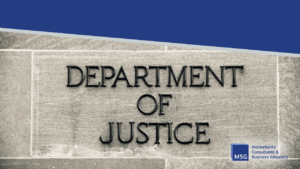The Super Bowl is an annual event that both avid sports fans and the indifferent have come to enjoy. There seems to be something for everyone. Pomp and circumstance over the year’s two best football teams battling for the Lombardi Trophy, the halftime show, and the commercials. But for many like me, the crowning of football’s best means just one thing: pitchers and catchers are about to report for spring training. Experts are supposed to be unbiased and transparent. So, before you continue reading, let me come clean. I’m a big baseball fan who bleeds the Mets blue and orange. I am not a season ticket holder, but I watch nearly every game. My favorite summer moments are taking the 7 Train from Midtown to Flushing, buying a single ticket the day of the game, and sitting in the stands as close to the field as possible, with my tie loosely around my collar and suit jacket on my lap. Not since acquiring Mike Piazza has there been so much pre-season buzz about the Mets. Signing Juan Soto to a multi-year contract for a king’s ransom has certainly set great expectations. But the past few months after the Soto signing has been all about the Pete Alonso contract negotiations. Who didn’t want the Polar Bear back in a Mets uniform? He is just a stone’s throw away from passing Daryl Strawberry for the most home runs by a Met. And who can forget the winning homerun dumped over the right-field […]
Blog
We have distilled decades of experience at the intersection of law, business and finance into a suite of articles to help our clients make sense of business valuation, forensic accounting, and litigation support. Please visit our site regularly for our latest content.
Pete Alonso’s New Contract: A Home Run or a Ground Out?
Posted in Forensic Accounting, on Feb 2025, By: Mark S. Gottlieb
ShareHow Trump’s Economic Policies Could Impact Business Valuations
Posted in Business Valuation, on Jan 2025, By: Mark S. Gottlieb
Share
There were many stark differences between the two presidential candidates. Setting aside their personal demeanors, the Republicans and Democrats shared very little common ground concerning their vision for the Country. These differences could not have been more apparent than the issues of the economy, which included taxes, trade, and government regulation, to name a few. Today, Donald Trump will be sworn in for his second term, and all eyes will be focused on how quickly he will effectuate or abandon the economic policies he promised to fulfill. Trump’s proposed economic initiatives expressed during his 2024 presidential campaign have sparked discussions across several industries. For valuation professionals and attorneys who hire experts, these policies are critical to understanding how they could affect the economic landscape and the value of their client’s businesses. The potential impact of Trump’s platform and his ability to effectuate the relative changes must be understood by professionals representing business owners. Tax Policy Changes Corporate Tax Reductions Trump’s plan to reduce the corporate tax rate from 21% to 15% could directly increase the after-tax cash flows of many businesses, a primary driver of business value under the income approach. Capital-intensive industries, such as manufacturing, real estate, and energy, will benefit from a lower tax rate and higher net earnings. Example: A manufacturing company with pre-tax earnings of $5 million would save $300,000 annually under the lower tax rate. Assuming a 10% discount rate, this tax savings could increase the business’s valuation by approximately $3 million. Elimination of Certain […]
Valuing a Business: The Market Approach and the Tale of the $6.5 Million Banana
Posted in Business Valuation, on Dec 2024, By: Mark S. Gottlieb
Share
In the world of business valuation, the market approach is akin to a treasure hunt, where comparable transactions are the clues leading us to the treasure trove of a company’s worth. However, just as in any good treasure hunt, not all clues are created equal, and sometimes, you might stumble upon a red herring. Take, for instance, the recent sale of a banana duct-taped to a wall for a staggering $6.5 million. Yes, you read that right—a single banana, a piece of duct tape, and a bare wall. The Market Approach: A Treasure Hunt The market approach relies on the principle of comparability. It’s the idea that you can estimate the value of a business based on the prices at which similar businesses have recently sold. This method is like using a map dotted with ‘X’ marks—each representing a comparable transaction. The key is to find enough ‘X’ marks to reveal a coherent picture. The $6.5 Million Banana: An Outlier or a Trend? So, what can the sale of a banana strapped to a wall tell us about business valuation? Imagine you’re on your treasure hunt, and you find an ‘X’ marked by a banana sale. Does this mean that every future fruit taped to a blank wall will be worth millions of dollars? Not necessarily. The banana sale, part of Maurizio Cattelan’s artwork titled “Comedian,” became an instant sensation, not for its fruitiness, but for its audacity and the statement it made in the art world. The value was […]
Happy Thanksgiving To All, Especially To The Folks at Macy’s
Posted in Forensic Accounting, on Nov 2024, By: Mark S. Gottlieb
Share
Thanksgiving has always been one of my favorite holidays. Who doesn’t like spending time with family, eating, watching the Macy’s Day parade, and rooting for your favorite football team? I particularly remember one Thanksgiving when the kids were young, and we ventured into the city to watch the parade in person. It was a clear, cold, and windy day as we cautiously watched the floats march down Sixth Avenue. For many of us, the Macy’s Thanksgiving Day Parade is synonymous with the beginning of the holiday season. But this year, the wind surrounding Herald Square and the iconic retailer has nothing to do with the parade or the season of giving. Yesterday, Macy’s announced the delay in its quarterly earnings report due to fraud detected within its accounting system. What makes this event even more significant is that the fraud was perpetrated by an employee within the accounting department. Early reports have estimated the losses to be approximately $150 million over three years. Fraud represents a real and costly challenge for businesses. It undermines productivity and profitability while costing companies billions of dollars each year. Despite its prevalence, employee fraud often goes unnoticed, ignored, or undetected by business owners, auditors, and legal counsel. The motivations for fraud, whether committed by senior managers, middle-level employees, or other staff, frequently mirror those portrayed in fictional narratives we often see in our favorite television shows. Individuals may succumb to financial pressures fueled by greed, gambling debts, failed investments, or the strain of maintaining […]
Measuring CrowdStrike’s System Failure
Posted in Economic Damages, on Oct 2024, By: Mark S. Gottlieb
Share
When a faulty CrowdStrike software update crashed roughly 8.5 million computers in July 2024, few could have predicted the massive financial fallout that followed. One of the biggest impacts was on Delta Airlines, which is now pursuing legal action. As an economic damages expert, I’ve seen many corporate disasters unfold, but this one stands out for both its scale and complexity. The Immediate Hit: $500+ Million Out of Pocket The most tangible impact sits at over half a billion dollars in immediate losses. Think about what happens when an airline suddenly can’t access its computer systems. It’s not just about canceled flights—though 7,000 cancellations over five days is staggering. It’s about the domino effect that follows. Picture thousands of stranded passengers needing hotels and meals. Consider the logistics nightmare of repositioning crews who are suddenly stuck in the wrong cities. Imagine the scene at airports as staff scramble to manually handle operations that are usually automated. Each of these scenarios comes with a price tag, and they add up quickly. The technical recovery itself was a massive undertaking. Because CrowdStrike’s update prevented remote fixes, IT teams had to physically access each affected computer. That meant countless hours of overtime, emergency technical support, and an all-hands-on-deck response that strained both human and financial resources. Future Revenue Losses The future revenue impact is harder to quantify. Think about it from a traveler’s perspective: You’re planning a family vacation or an important business trip. Although many airlines were affected, Delta was by far […]
Bennifer’s Pricey Parting: High-Net Worth Divorces Without Prenups
Posted in Divorce & Matrimony, on Aug 2024, By: Mark S. Gottlieb
Share
It’s 2024, and Bennifer is splitting up again, this time with real consequences. The divorce of Ben Affleck and Jennifer Lopez has sparked quite a conversation in our office this morning, and although I don’t plan on becoming a gossip columnist, I wanted to provide some healthy speculation based on my 35+ years as a financial expert, often retained for divorce cases. Understandably, there is nothing romantic about a prenup, but without one, all the earnings and assets made during their union may be considered community property. This situation highlights the importance of financial planning before marriage, especially for high-net-worth individuals. Despite their relatively short marriage, both Lopez and Affleck have been incredibly active professionally. Affleck has starred in two films and produced two others, while Lopez has starred in four films herself. Not to mention the $68 million mansion they purchased jointly—a 12-bedroom and 24-bath property that now becomes a significant asset to be divided. Before you ask, “Why wouldn’t they get a prenup?” or “Who the heck needs 24 bathrooms?” the real question should be: What’s two years of accrued assets for a couple with a mid-nine-figure net worth? Although Lopez is considered the “monied spouse” in this scenario, with such high individual net worths, it is unlikely that these divorce proceedings would lead to any “nickel-and-diming.” This is especially true considering that she filed for divorce “pro se” (or “pro per”), meaning that she chose to represent herself initially. Representing yourself as a pro se party in […]
Beyond Financials: A Look at Key Valuation Drivers
Posted in Business Valuation, on Jul 2024, By: Mark S. Gottlieb
Share
Make no mistake about it: Analyzing and understanding the subject company’s financial statements is paramount when opining on value. However, when you start “peeling the onion,” other factors play an important role. This is why you can value two similar businesses simultaneously and arrive at different values. Key valuation drivers range from a business’s culture to tangible assets and/or intellectual property. The following provides just a few that should be considered beyond a company’s financial composition. Customers & Competitors Dependency on a few or limited customers will almost always make a business vulnerable. In other words, a diversified customer base is almost always preferable. A customer base extending across several geographic regions or market sectors may add even greater value than expected. This is not just a valuation expert speaking but a sentiment many sophisticated buyers share. Industry An industry by itself can also be a valuation driver – particularly if the sector is expanding rapidly, like AI. Business analysts are often attracted to startups in a young, hot industry – rather than one solely dependent upon organic growth. Keep in mind that you can’t use industry as your sole determinant of value. Value and the valuation process are acknowledged when a company distinguishes itself from the herd. Internal assets Favorable internal factors may also drive a company’s value. Although these factors may not be as clear as financial performance indicators, one should assess the following attributes when determining value: Management talent: Is the subject company’s management team capable of running […]
Depp-th Perception: When Numbers Speak Louder Than Words
Posted in Economic Damages, on Jun 2024, By: Mark S. Gottlieb
Share
There is a new Netflix docuseries, Depp vs. Heard, which covers the Johnny Depp and Amber Heard trial—one of the most publicized trials this decade. Whatever personal biases you may have toward the case’s outcome, it’s a compelling case study of economic damages. Depp’s team presented evidence of his alleged lost earnings due to Heard’s accusations. A forensic accountant took the stand and analyzed Depp’s career trajectory, past earnings, and potential future earnings to estimate the financial impact of the allegations on his career, including presenting this helpful demonstrative to the jury (recreated): Likewise, Heard’s expert presented evidence of financial losses she allegedly suffered due to Depp’s actions. However, she didn’t have the economic damages or forensic accounting credentials Depp’s expert possessed, which became apparent during her cross-examination. Lost profits and economic damages are not independent causes of action in litigation. Rather, they are a damages remedy when a legal wrong has caused financial harm. Quantifying these amounts can be one of the most challenging aspects of a damages case. Calculating hypothetical profits requires deep financial analysis, the application of accepted methodologies, and consideration of market factors. For more information about… Proof and evidence for lost profits Ex-ante & ex-post approaches Loss of business vs. loss of profits Methods for determining economic damages & lost profits Download “An Attorney’s Guide to Lost Profits and Economic Damages”
The Ongoing Battle Against COVID Relief Fraud
Posted in Forensic Accounting, on Jun 2024, By: Mark S. Gottlieb
Share
A simple Google search for “PPP fraud” will bring you to hundreds of local news stories of recently indicted individuals and business owners alike defrauding the COVID-era Paycheck Protection Program. Nearly four years later, authorities have investigated 1,644 cases of tax and money laundering related to CARES Act fraud, with potential losses estimated at $8.9 billion. The Coronavirus Aid, Relief, and Economic Security (CARES) Act, signed into law on March 29, 2020, provided over $2 trillion in economic relief to help Americans navigate the financial challenges brought on by the COVID-19 pandemic. The CARES Act initially authorized up to $349 billion in forgivable loans to small businesses through the Paycheck Protection Program (PPP), with Congress later approving an additional $321 billion in PPP funding. In addition to the PPP, the CARES Act authorized various other relief programs, including the: Economic Injury Disaster Loan (EIDL) Economic Impact Payments (EIP) Provider Relief Fund (PRF) Pandemic Unemployment Assistance (PUA) Federal Pandemic Unemployment Compensation (FPUC) As the United States continues to grapple with the aftermath of the COVID-19 pandemic and its economic relief efforts, President Biden signed two bills into law that provide the Department of Justice and other federal agencies with more time to investigate and prosecute fraud charges related to these COVID-relief programs. These bills extend the statute of limitations for PPP and EIDL fraud charges to ten years. In the coming months, we may see the passing of the Fraud Prevention & Recovery Act, introduced by Senator Gary Peters (MI) in […]
The Hunt for Hidden Cash in Closely-Held Businesses
Posted in Business Valuation, on May 2024, By: Mark S. Gottlieb
Share
Discussing hidden cash and unreported income is always a popular topic for both commercial litigators and family law attorneys. Currently, we are working on several engagements that have developed into full-fledged forensic accounting and fraud investigations. Experts (as well as IRS investigators) look at key areas to prove that cash is missing and to estimate how much income the business owner may not be reporting. Hidden cash can be discovered by taking a closer look at: Bank deposits: These can be used to reconstruct income by analyzing the parties’ bank deposits, canceled checks, and currency transactions, accounting for cash payments made from undeposited currency receipts and non-income cash sources, such as loans, gifts, inheritances, or insurance proceeds. Sources and use of funds: Here, the business owner’s personal sources and uses of cash are analyzed to determine where the owner’s income and other funds came from and how they were eventually used. If the owner is spending more money than they are taking in, the excess may represent unreported income. Net worth: An unsubstantiated increase in a business owner’s net worth can reveal unreported income. Telltale documents such as bank and brokerage statements, real estate records, and loan or credit card applications are often used to define this increase. The net worth gain is calculated, reported income is subtracted, and the amount is further adjusted to reflect any nondeductible expenditures and non-income sources of funds. Percentage markup: Net income is often estimated by applying a benchmark profit percentage to sales or […]


